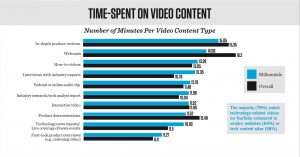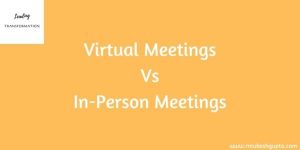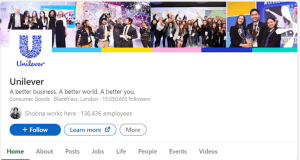We’ve always maintained that employee engagement and internal communications are simply content marketing in the context of HR. It appears, however, that that mindset is still yet to be realised by many companies. And they’re getting left behind.
Just like the wider web, there’s a big heap of internal content that is pushed out to the workforce with no rhyme or reason, under what is only ostensibly an employee engagement (EE) strategy. What those companies may not realise is that they’re (a) potentially disengaging their workforce with valueless information, and (b) missing out on bolstering what is obviously a key contributor to their bottom line. Just as sales and marketing need to work together to drive content that converts customers, so too must HR, internal comms and marketing collaborate on KPIs for employee engagement.
In terms of impacting the bottom line, there’s often difficulty in showing return on investment
Where’s my return?
Employee engagement can be seen as a ‘nice-to-have’ rather than a necessity. Happy employees that are proud of where they work are obviously a good thing. However, in terms of impacting the bottom line, there’s often difficulty in showing where your return on investment will come from.
The other day we talked about how brands are pushing out too much content without any plan for how or why they’re doing so. As you might imagine, the same can be said of internal communication. But while the content marketers have full access to the data that governs their decision making, it isn’t so easy for the internal comms guys to get their mitts on similarly crucial HR data.
The state of employee engagement
A recent report from Halogen, The State of Employee Engagement, suggests that the biggest barrier to a fruitful employee engagement programme is not having access to key HR data, with just one in five organisations saying they feel it is easy for them to extract that information. This is pretty significant when you consider that those organisations with access to the right HR data are more than twice as likely to be satisfied with the results of their engagement programmes.
Organisations with access to the right HR data are more than twice as likely to be satisfied with their EE programmes
The reason for obtaining that data and aligning it with key business metrics – in other words, your measures of success – is so employees can better visualise the journey that they’re all on, and collectively stay their course (if it’s all going well, obviously). Perhaps, even more importantly, it gives senior stakeholders an idea of where employee engagement impacts on the company bottom line: it creates the business case to get buy-in for your strategy.
The business case for employee engagement
The business case for employee engagement has been quite starkly made for some time. In 2013, for example, Engage For Success published its white paper, Employee Engagement – The Evidence.
The paper stated that businesses with high employee engagement can expect:
- 2 x net profit
- 5 x revenue
- 12% higher customer advocacy
- 18% higher productivity
- 40% lower staff turnover
Last October we outlined the results of a Gallup survey that estimated the cost of poor employee engagement to big businesses in the US is somewhere in the region of $ 500 billion.
In that blog we said that there are too many companies with ‘archaic employee engagement strategies’, which is an issue when you consider that Millennials will comprise around three quarters of most companies’ workforces within a decade. And, as we’ve said ad infinitum, recruiting and engaging a Millennial workforce takes more than a ping pong table in the office.
There’s no one-size-fits-all approach
Buying-in to employee engagement
We’re no strangers to the importance of happy employees, but it’s relating that happiness to the bottom line that persuades any kind of senior buy-in.
It’s nevertheless difficult to try and recommend HR data KPIs ‘as standard’, as these have to relate your specific business goals and culture. There’s no one-size-fits-all approach; we’d normally assess these through a bespoke workshop and work out the specifics with each individual client.
But, ultimately, you’re aiming to balance levels of employee engagement with your investment in internal communication. Just as with content marketing, it makes no sense to waste time and money running an internal communications strategy that doesn’t speak to your employees.
In an internal comms context, large amounts of irrelevant, unused content could hide an extremely important message. On another level you could turn employees off ever using your internal systems because they’re overwhelmed or bored. In other words, by not producing the wrong content you could end up damaging engagement.
In its November 2015 report, Digital HR – The New Imperative, Aon Hewitt says that on a basic level you must provide an HR experience for employees that is comparable with the experience you deliver to your customers – including access to information, social learning and personal development options that tie directly to employee productivity and aspiration. You also need a unified talent management platform – incorporating multiple work processes, but with one way of working – to easily collect and compare all that HR data. This means that employees can align their own performance and development options with that of the wider organisation. And you need an adaptive analytical mind set, whereby you create KPIs and set business goals specifically based on how your employees develop.
Provide an HR experience for employees that is comparable with the experience you deliver to your customers
To finish with an example, the Metropolitan Police’s Glenn Tunstall, chief superintendent and borough commander of Kingston, recently explained to ORC International’s Employee Engagement Conference the engagement principles that underlines Kingston becoming the safest borough in London. He says it was down to a strong, simple strategic vision that everybody could get on board with. That was “to be the best local police service in the country”.
He said: “You have got to talk about the vision – embed it – and link it to reward and recognition.”
This resulted in a 70% engaged workforce in the force’s 2015 employee survey, a 35% increase on the previous staff survey.
As we can see, HR needs to think like marketing. There must be a solid narrative that directly relates to business outcomes running through HR operations, just as it does your customer-facing content. Employees are on a journey with you, and they need to be sold on that narrative.
Business & Finance Articles on Business 2 Community
(83)





